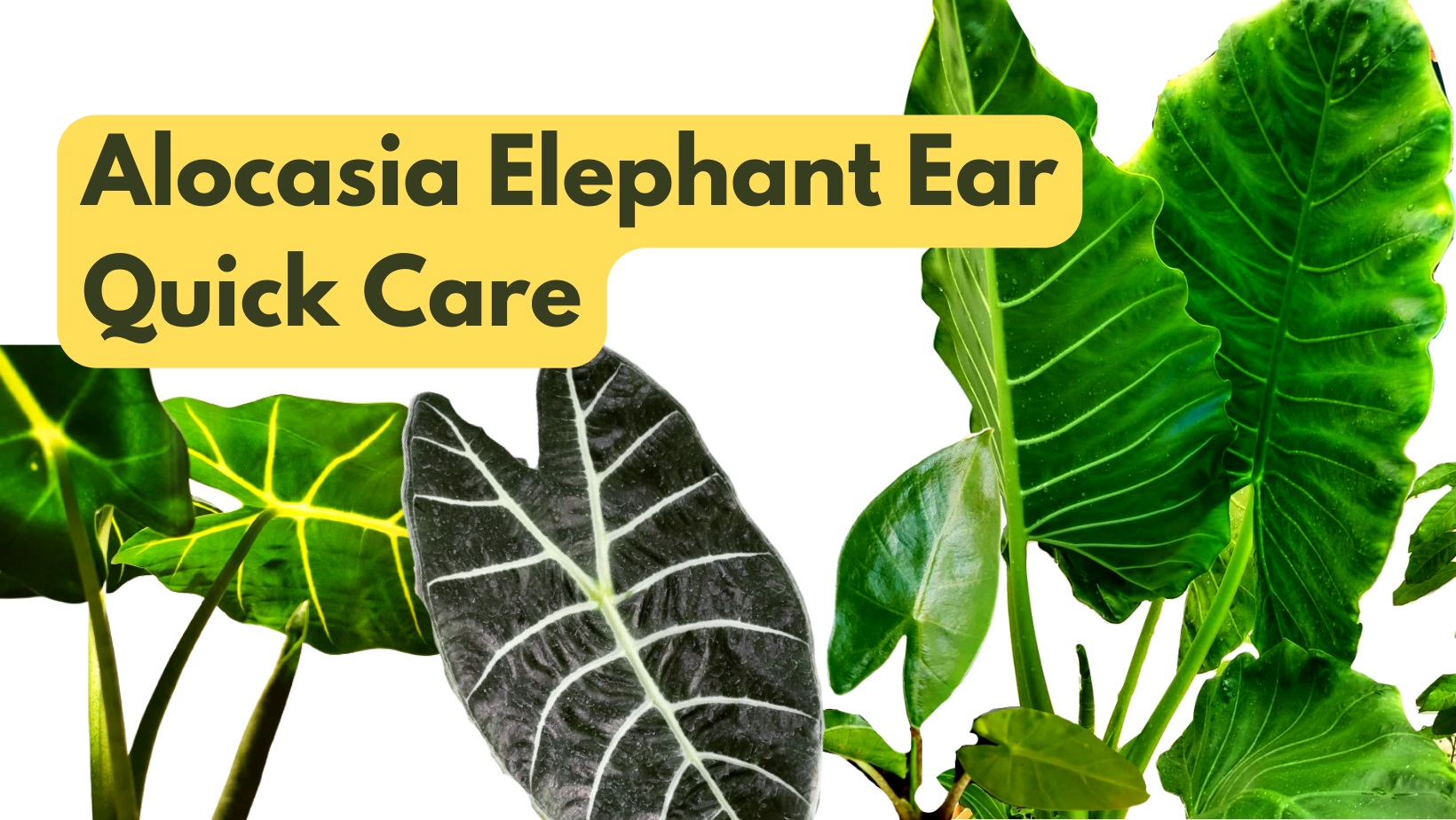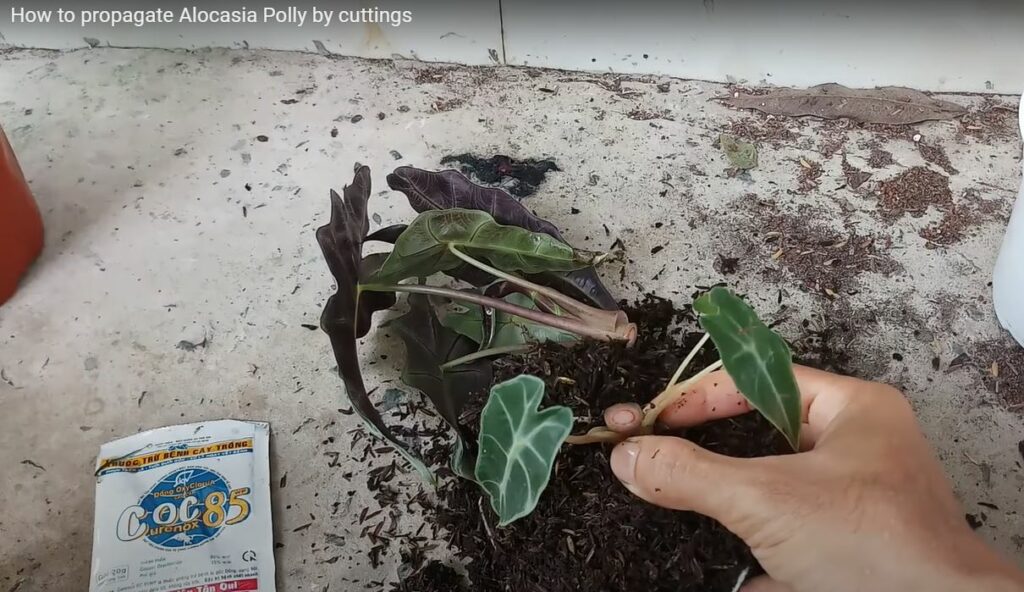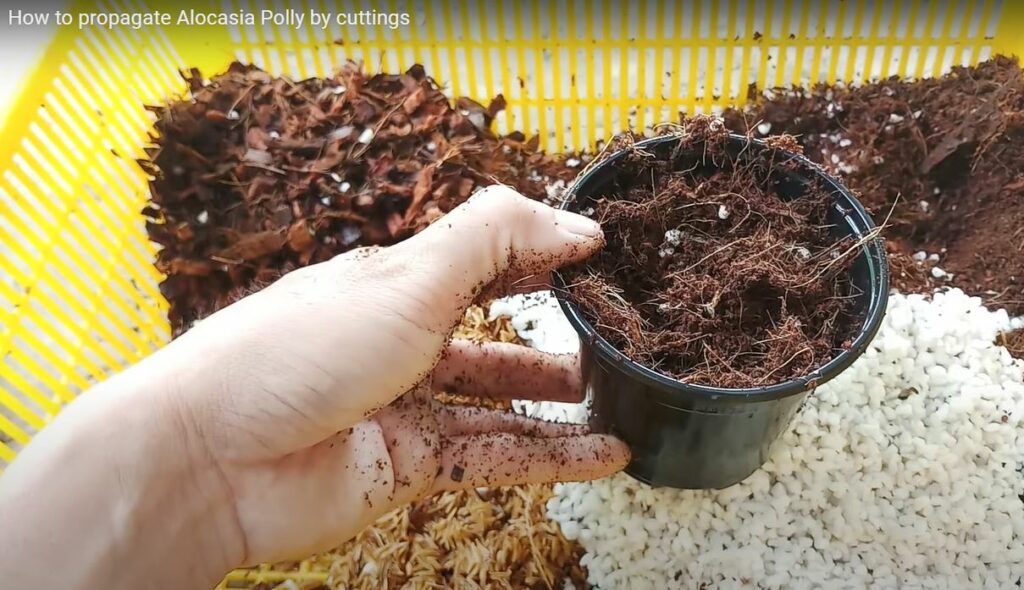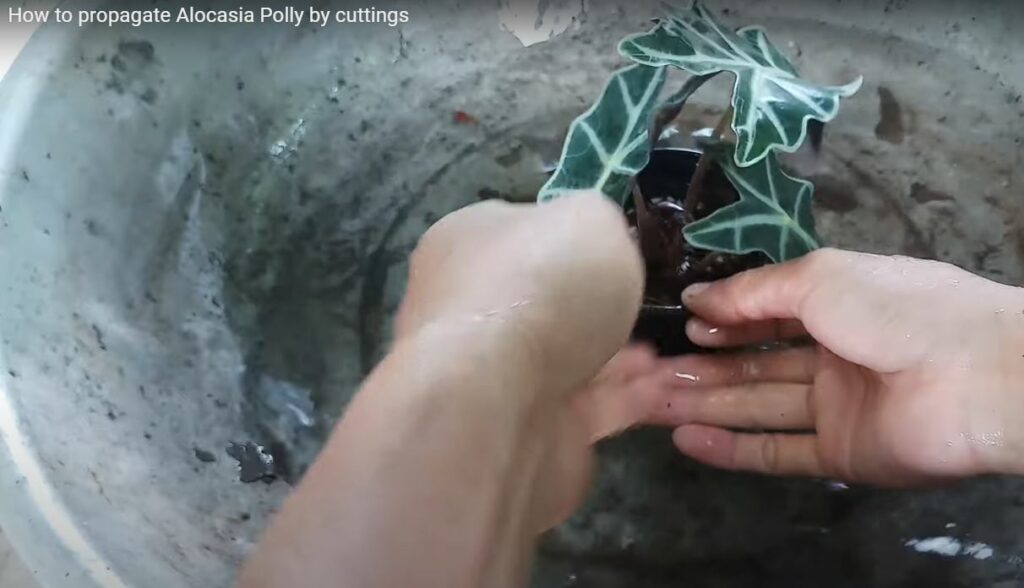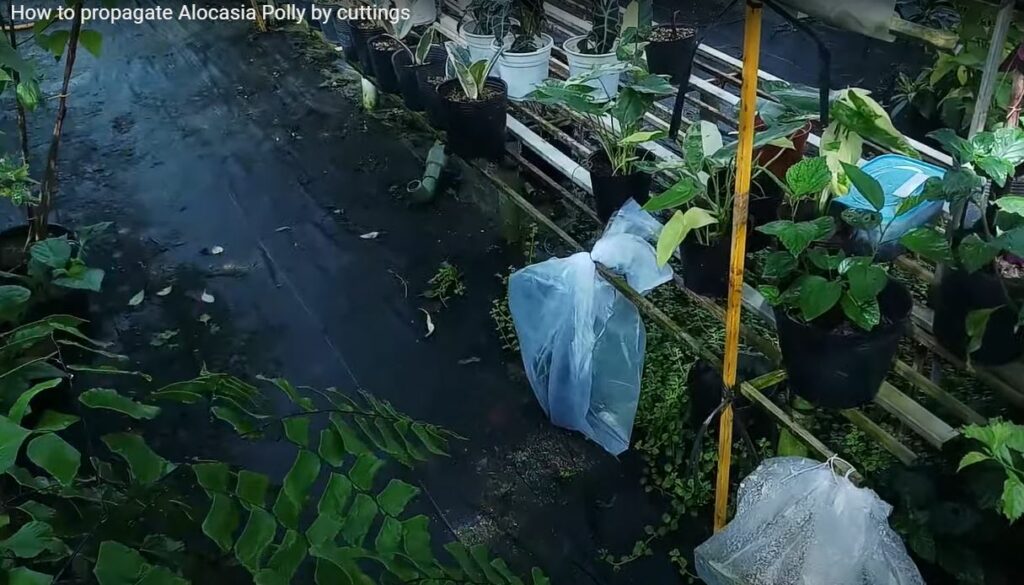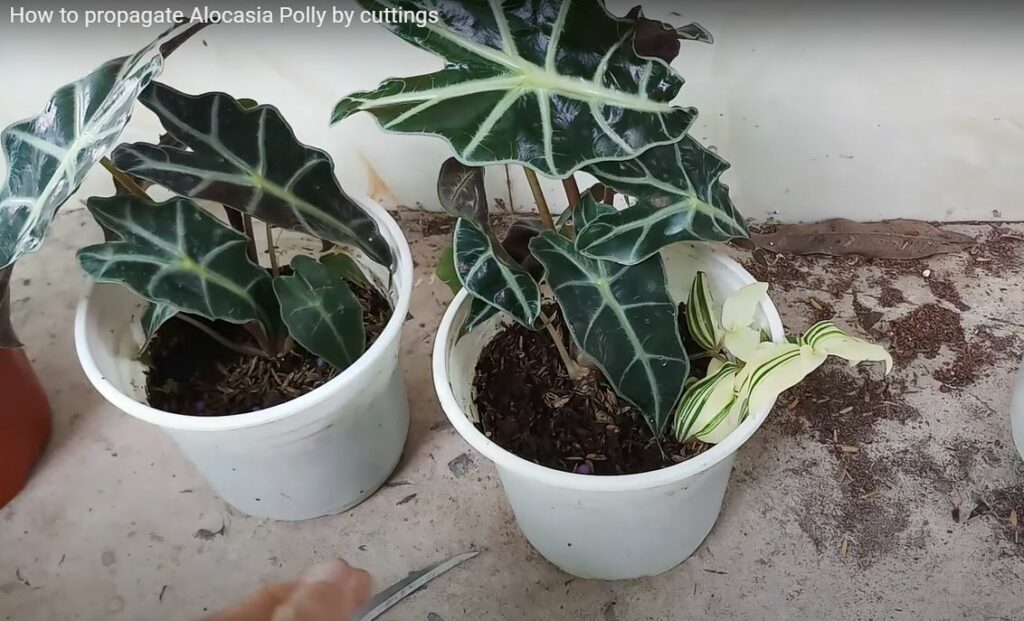Alocasia is a perennial broad-leaf ornamental plant. This plant is a noted species of rhizomatous or tuberous category and belongs to the Araceae family.
- Are alocasia and colocasia elephant ear plants the same? Though they are related to the same Araceae family, they show contrasting differences in structure and growth.
- Alocasia plants have waxy bright upright leaves pointing upwards while colocasia plants have matte down-pointing leaves. Also, alocasia plants have deep distinct prominent leaf veins.
- These plants love humid climates so misting them will keep your plants happy and under perfect conditions, alocasia plants can grow faster nearly 3-5 feet in a year.
- Since elephant’s ear/taro plant can grow faster, you can place your plant in a larger pot to avoid reporting later
Want your plant to grow more leaves, place her in a bright indirect light spot or bright spot without direct sunlight.
Alocasia is a famous decorative houseplant that has been cultivated in hybrid and pure forms by ample of gardeners around the world. It belongs to the tropical and subtropical climates more effortlessly.
You can grow an alocasia plant smoothly in your garden or a planter with some basic growing essentials. Here is a quick overview in this regard along with some other imperative facts about alocasia, which you must validate before handling one-
How to Care for Alocasia / Elephants Ear
Soil & Water
An alocasia plant prefers soil that is porous and fully fertile with an excellent drainage quality. Prepare the soil with perlite, peat moss, sand, and normal potting soil with some organic plant food.
Water: Alocasia plants want moist soil constantly, so try to keep the watering method steady. Wait until the top surface of the soil seems 25-50% dry. Make sure the excess water is draining well, every time you water your plant and you can do misting sometimes too.
Sunlight Needs and Fertilizer
Fertilizer: Try any all-purpose fertilizer with half-strength to feed your plant adequately. Don’t skip the fertilization during the spring and summer months and don’t feed your plant during winter or fall. Keep the NPK ratio 20-20-20 for the best outcome of your course.
Sun Exposure: Due to being a tropical plant, the alocasia plant could tolerate bright light but keep it through the indirect source. So, you can provide your plant sun with partial shade for suitable sunlight production.
Climate: It always wants warm temperatures in tropical and subtropical environments. Keep the temperature level 65° to 85° F and never let the temperature below 60° F, ever not even during the night. Alocasia plants also like high humidity like any other tropical plants.

Pruning and Repotting
You must prune away any dead or damaged or infected part from your growing alocasia plant consistently. This will keep this big-foliage plant in shape and prevent it from getting infected by damaged segments. You can apply the process twice a year for the best result.
Repotting: You should repot your plant once in a few whiles when this big-foliage plant seems immoveable to its current planter. Make the soil moist a bit before starting the repotting process for a better experience. Also, always place a coffee filter on the drainage hole of the new planter to make the process effective for your growing plant.
Pests and Bugs: Mealybugs, spider mites, aphids, scales, etc. are some common pests and bugs you can find around a growing alocasia plant. Spray soapy water, and flush with normal water or apply neem oil spray to get rid of aphids and similar pests entirely without any destruction by any chemical-based products.
Propagation: Growing Alocasia from Cuttings – Van Loan Garden (Image Courtesy)
How to Propagate Broad Leaved Alocasia:
An alocasia is a tuberous or rhizomatous plant and thus sprouts from a central rhizome section. That’s why, this plant is not that apposite for the propagation by cutting, like other houseplants. Let’s see how to do the regrow process through the rhizome in our step by step method below-
Supplies You Need:
- A Shovel
- A disinfected cutter or scissor
- A brush
- Some paper towels
- A planter
- Potting mix prepared with loamy soil, organic fertilizer, and peat moss
- A sharp object to dig holes
- And a watering can
How to:
- Wait till the spring is gone and the summer is just arrived to do the process
- Take the shovel and dig the plant out of its current planter carefully
- Make sure you don’t damage the roots of the plant during this process
- Brush the soil out attentively from the root and wipe it gently with a paper towel
- Now divide with different rhizomes and cut them out separately with a cutter
- Once the rhizomes are separated with individual shoots, sow them in separate planters
- To do so, bring a planter with the preferred potting mix and dig a hole in the middle
- Sow the rhizome carefully and secure it with the remaining potting mix
- Water the soil slowly with a watering can and place the planter in a warm spot
- Make sure it can get bright indirect light and high humidity till the germination
- Water it regularly till you find the new growth has started, and then, provide the adequate care that it claims to thrive best.
Quick Read: How to propagate fiddle leaf fig – beautiful large leaf house plants.
Few Varieties of Alocasia:
Alocasia is not a single plant but a cluster of some different species with varieties of big-foliage ornamental plants in this one category. You can find almost 80 to 90 species of alocasia plants in this single category. Most of them are hardy and easy to grow in your home climate. Here are the best 5 species we refer to you, which can adapt to the home environment more effortlessly-
Black Velvet Alocasia:
This species of alocasia grow big heart-shaped leaves with a dark greenish hue. It gives the foliage the glance of a dusky mysterious touch and seems regal to the viewers efficiently.
Amazonica Alocasia:
It is the most popular species of alocasia that is very much adaptable to a house environment either. The burgundy hue over the big, pointy foliage and the wavy edges, give the narrow leaves of this species a must-have peek undeniably.
Alocasia Silver Dragon:
The gorgeous leaves of this species hold a sheer elegance due to their unusual silvery layer over the green base of the foliage. The lighter waxy layer on the leaves with protruding venation provides the silvery-bluish leaves a dash of an exotic look.
Alocasia Red Secrete:
This is another great species of alocasia plant that grows swiftly in a pot. Its maroon to red hue over the big waxy foliage gives this plant an exclusively tropical appearance. The veins of coppery green with the recessed style provide the leaves a presence that is manifest for any ogler.
Alocasia Hooded Dwarf:
This is one of the alocasia species which grows comparatively smaller foliage than the other varieties. It grows completely green stems with green leaves in a wide-ranging heart shape. The glossy green hue over the classy foliage would make this one a must-have species for your home.
Some other popular alocasia species are-
- Alocasia dragon scale
- Giant taro Alocasia
- Alocasia longiloba
- Purple sward Alocasia
- Alocasia zebrina
- Aand alocasia stringy, etc.
Quick read: 9 Best large leaf indoor plants like alocasia /elephant’s ear
Why is My Alocasia Leaves Turning Brown?
Who wouldn’t like to decorate their house with this classy-looking big-foliage ornamental plant ever? Well, but the problem creeps in when you find that the foliage of your gorgeous alocasia plant is turning brown without leaving any clue!
This is one of the most common issues a growing alocasia may face. Fortunately, you can prevent this issue and even revive those brown leaves green again, if you can catch the problem at their primary stage. Most of the time, improper caring lead our plant toward this troubleshoot issue. Here are some possible reasons and their solution for browning leaves in this attempt-
Reasons:
- Overwatering
- Underwatering
- Untreated fungal or bacterial infection
- Oedema due to soggy soil
- Sunburn
- Low light
- Pests or bugs’ issues
- Temperature stress
- Improper humidity
- Lack of nutrition
- Frost damage
- And inattentiveness
Solutions:
- Water your plant carefully, when the topsoil is 1-2 inches dry
- Make sure the soil couldn’t dry much or your plant stays water-less for long
- Apply methods to keep your plant and planting soil fungal or bacterial infestation-free
- Make sure the soil is draining well, every time you water it thoroughly
- Be certain you don’t make the soil soggy in the way of making the soil constantly moist
- Keep the plant away from direct sunlight or full sun exposure
- Do not place the plant where it can’t get enough light, like 6-8 hours per day
- Don’t let the bugs or pests feed on your plant ever, not for the shortest period as well
- Keep your alocasia plant at a stable temperature constantly
- Make sure the humidity level of the plant is continuously high
- Fertilizer your plant regularly, especially during the summer and springtime
- Use slow-release fertilizer like fish emulsion or seaweed, to keep the nutrition level proper
- Keep the planter away from open window drafts and direct frost exposure
- And final, try to stay updated about your plant all the season. so then, you can catch and solve an issue quickly at its primary stage.
Quick read: How to take care of yellowing leaves of hibiscus.
Is Alocasia Toxic to Cats?
Unfortunately, the alocasia plant is poisonous to cats or any mammals, due to its highly toxic properties. An alocasia belongs to the Araceae family and is thus considered toxic to the cats, like its other species.
Cat safe plants: List of pet-safe house plants for your indoor garden.
Why It is Toxic:
An alocasia plant holds the insoluble oxalate crystals in it. This component provides chemical reactions to the stomach of a cat when it ingests any part of the plant.
What Could Be The Reactions:
- Vomiting
- Drooling
- Oral pain
- Decreased appetite
- Pawing at the face
How to Deal With It:
- Call the Pet Poison Helpline immediately
- Encourage your pet to vomit
- Make your cat swallow activate charcoal
- Take your cat to the nearest veterinarian hospital instantly
- And go the proper intestinal diagnosis preferred by the experts.
